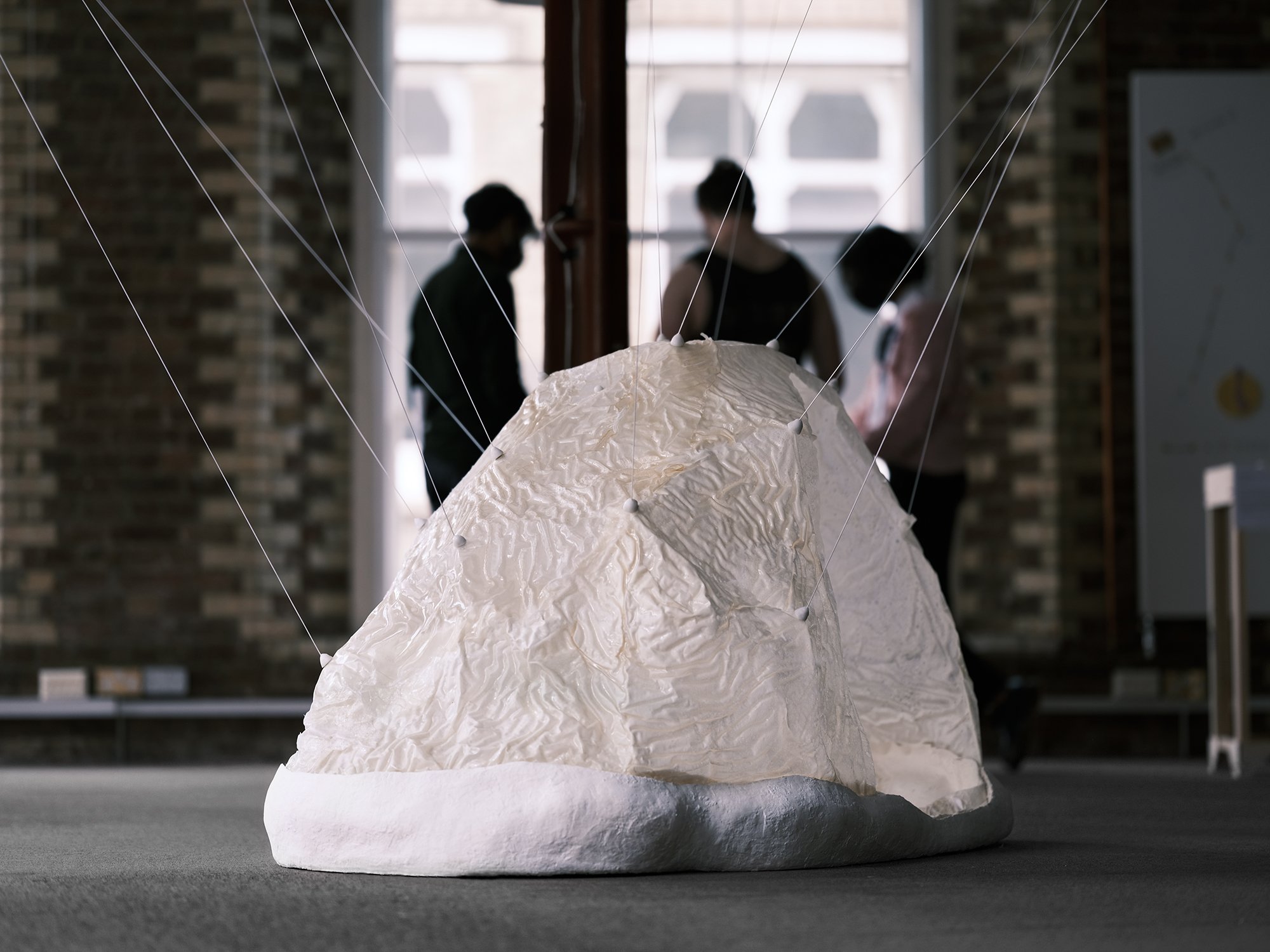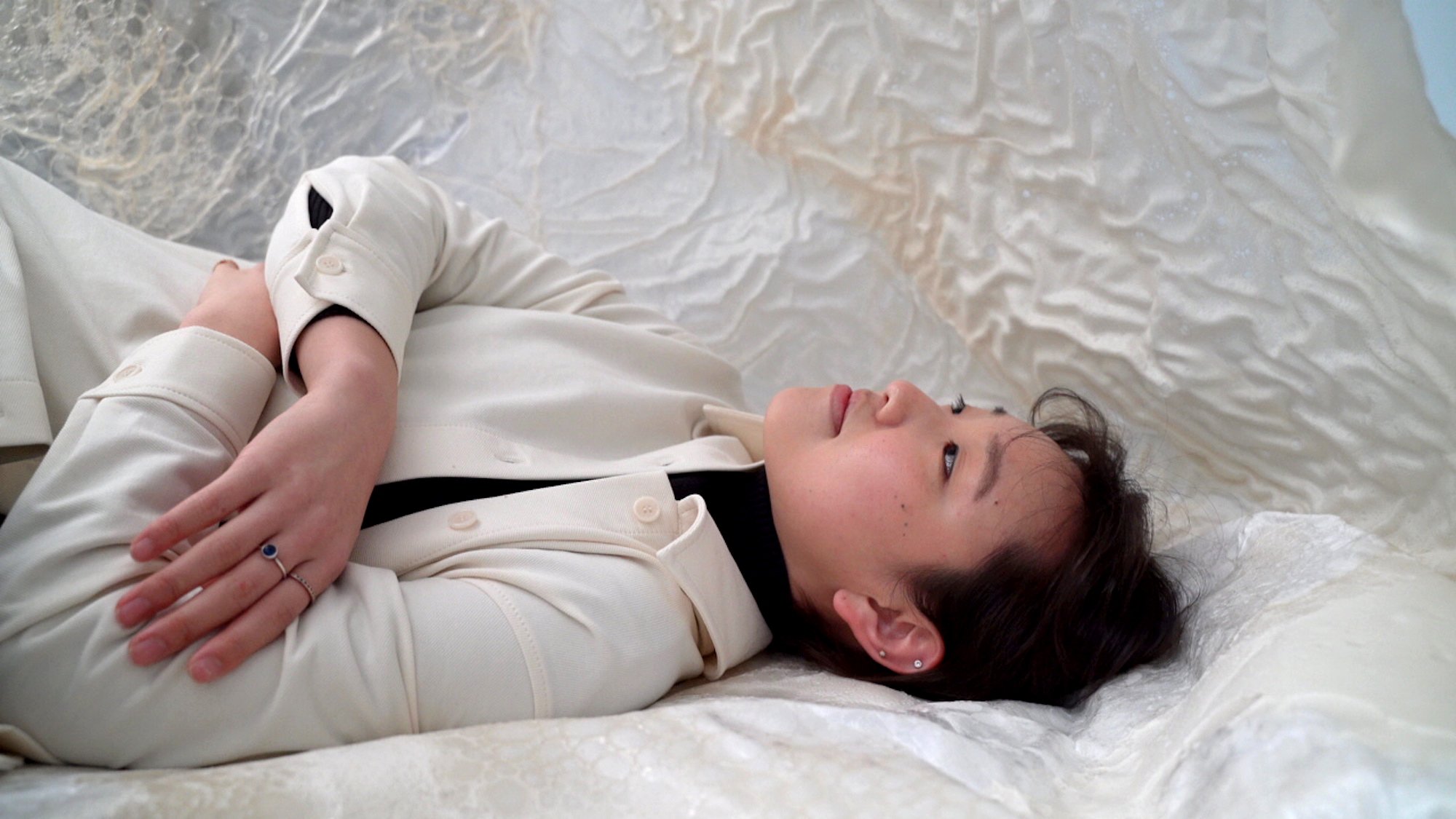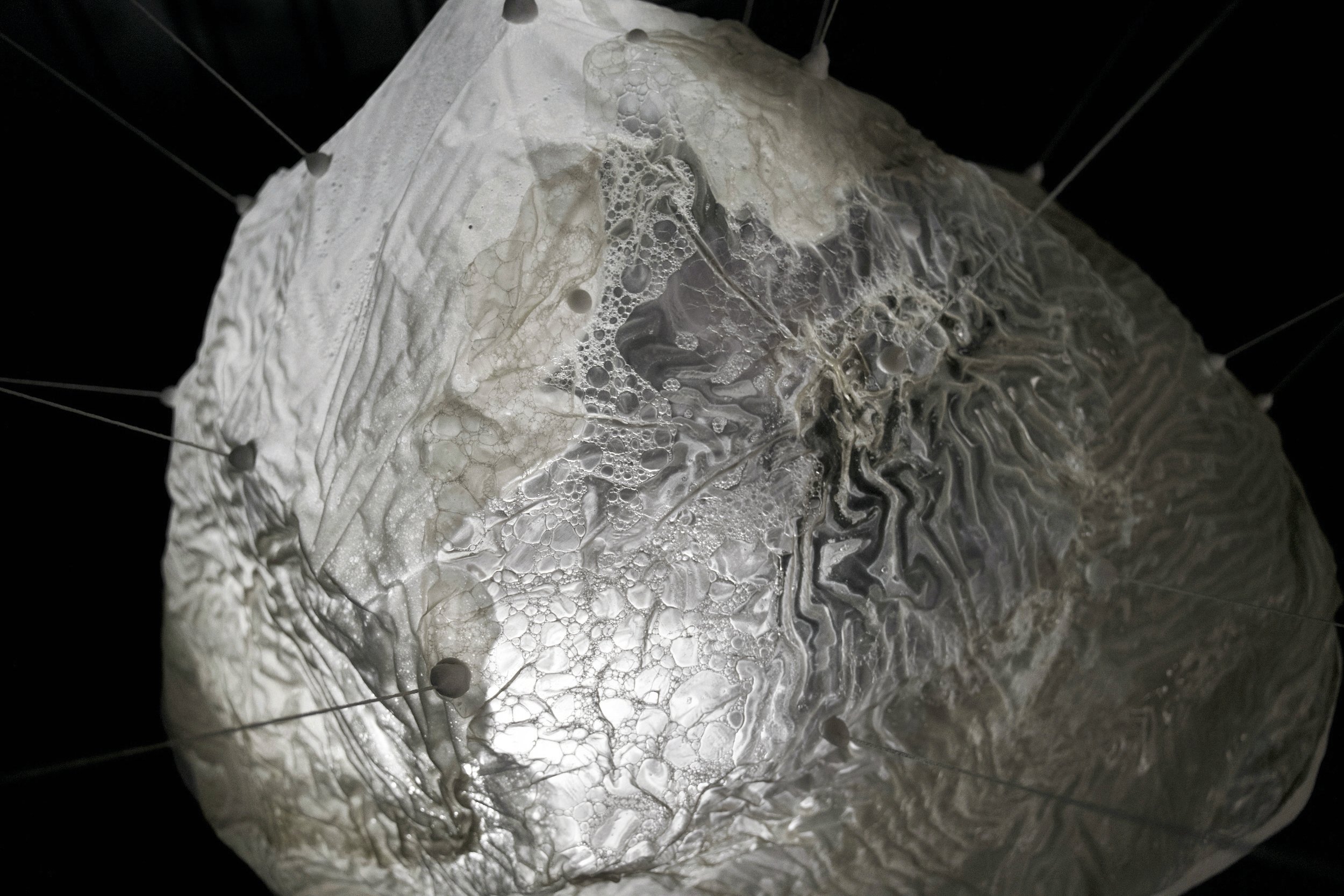
‘Poriferous Morphologies of our Precarious Futures’ by Claudia Palcova
MA Information Experience Design (2019 - 2021)
Royal College of Art, London, UK
Key supervisors: Charlotte Jarvis & Dr. Claude Dutson
keywords: temporary architectures, dwelling spaces, inclusive practice, sustainability, biophilia, morphing materials
“We imagine the building and our spatial environment as a second skin, an extension or projection of our body and our psychology; we wear spaces and morphology like clothing or a membrane, an interface or prosthesis, physically and psychically, and indeed socially and collectively.” Jon Goodbun, 2011
Poriferous morphologies of our precarious futures is a speculative exploration of plausible futures for temporary dwelling spaces. Questioning the form, function, durability, and locality of our housing structures, this experimental project marks only a fraction of ongoing research that reimagines the role human beings play in designing, constructing, and maintaining our built environments.
Viewing housing structures as extensions of our skin, Pori-morph aims to nurture more instinctive interactions with our personal spaces, blurring the boundaries between our bodies and their surroundings. It imagines morphing structures that can adapt their physical qualities in response to our constantly changing needs. Single membrane structures that can provide support and disruption, protection and exposure, connection and isolation all at the same time.
This project responds to current property inflation and housing scarcity in my hometown Bratislava. The city’s landscape has dramatically changed over the past 5 years with countless luxurious developments emerging around its central areas. Witnessing gradual decrease in the accessibility and affordability of the city led me to search for non-invasive housing solutions that can provide accommodation accessible to everyone, especially people from low-income backgrounds and temporary residents of the city.
I drew inspiration from the unity of colonial organisms, the ability of multiple individuals to form symbiotic relationships, in order to create a stronger, safer living environment. Following my studies of bubble corals and their responsive form affected by external and internal conditions, I began to question our building methods as well as our living patterns. How can future dwelling spaces benefit from already built environments? How can temporary structures grow on top of permanent sites? How can they form a symbiotic relationship? How can they accommodate growth and adaptation? How can they morph around our bodies? How can they merge our bodies with their surroundings?
This experimental project aims to rethink our understanding of space and place in order to broaden our physical and emotional relationships with our private spaces. Architect Xi Zhen (2018) discusses the importance of void stating “when you shift the focus to the void, to the space, you automatically shift it to the people”. I started to imagine minimal, single-membrane structures that would require only air to adapt their form, size, and texture. This approach would subsequently reduce our dependency on multiple possessions and instead nurture a natural connection with our environment.
The entire Pori-morph unit was cooked and constructed at home with limited means, emphasising void as the main tool for manipulation and modification of the structure’s physical qualities. Working with bioplastics in an attempt to create a fully biodegradable structure, I quickly realised that employing void for material manipulation enabled me to introduce a variety of forms, textures, flexibilities, thicknesses, and transparencies. It allowed me to open up the space or on the other hand create a more intimate space, in turn changing the impact of the void.
Throughout this process, I became fascinated by the idea of cooked architectures. Employing non-invasive methods and ingredients that are affordable and accessible to everyone, allows quick and effortless construction of temporary shelters. Pori-morph is my first attempt to create a freely accessible dwelling space that removes all distractions of the city. Acting as a womb, a cocoon, its form is minimal, leaving the focus on its relationship with the body and mind. Its ability to adapt and morph around its occupant. Its ability to allow controlled light transmission and form distortion through material manipulation. Utilising morphing, biodegradable materials reliant on support from permanent sites, this speculative piece emphasises the importance of a symbiotic relationship between the structure, the occupant, and their surroundings.
The temporary Pori-morph shelter is accompanied by morphing soundscapes designed by Nicholas Faris. Disrupting the current sonic qualities of our urban environments, the sonic layers aim to open up conversations and speculations about both tangible and intangible qualities of our future living spaces. How will the sounds of our cities change with new materials? Technologies? Forms? What will the sounds feel like? What will the atmosphere feel like? How will we live alongside each other? Where will we live?
Claudia Palcova / MA IED / RCA / 2019-21
Claudia Palcova is a Slovak multimedia designer who creates immersive experiences that challenge people’s perceptions and relationships with their surroundings. Combining temporary architectures and interactive technologies, Claudia encourages intuitive explorations and spontaneous engagement in her speculative futures. Concerned with inclusive design for public spaces, her experimental practice uses minimal interventions for maximum impact.






